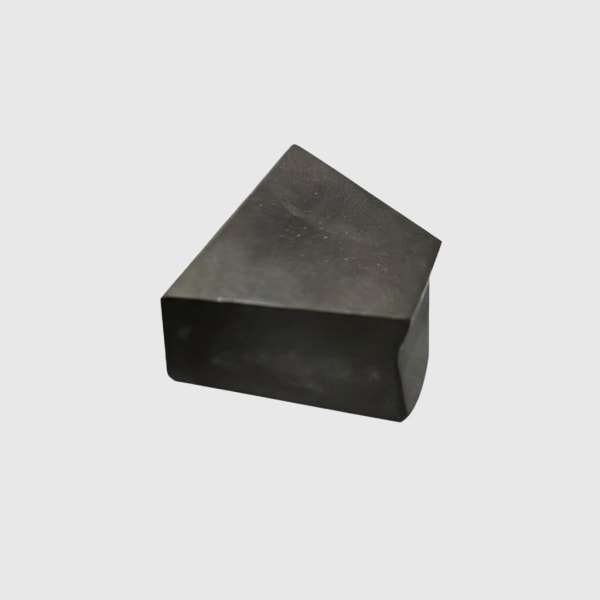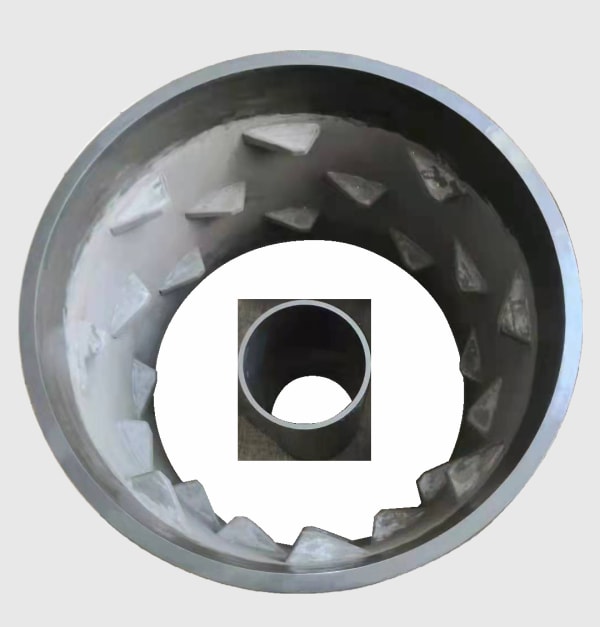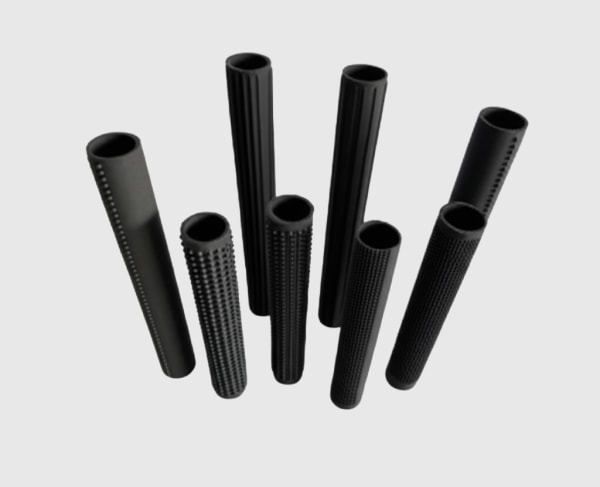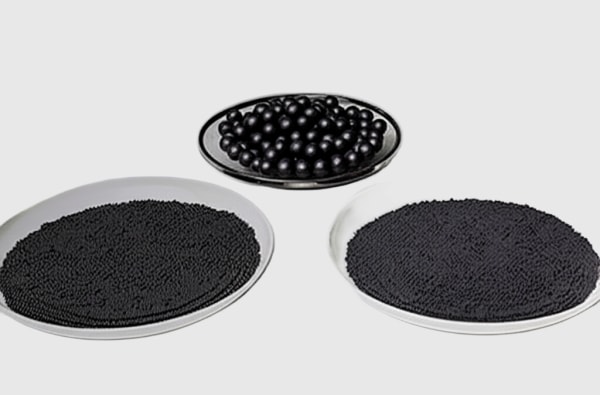Key SiC Producers in the Brazilian Market
Silicon Carbide (SiC) is rapidly becoming the material of choice for high-performance applications across a myriad of demanding industries. Its exceptional properties, including extreme hardness, superior thermal conductivity, chemical inertness, and high-temperature strength, make it indispensable for environments where traditional materials fall short. From semiconductor manufacturing and power electronics to aerospace and renewable energy, the demand for custom silicon carbide products is on a steep rise. This blog post delves into the critical role of SiC, explores its diverse applications, and provides essential insights for engineers, procurement managers, and technical buyers seeking high-quality, custom SiC solutions.
The Indispensable Role of Custom Silicon Carbide
Custom silicon carbide products are not merely components; they are critical enablers of innovation and performance in advanced industrial systems. Unlike off-the-shelf solutions, custom SiC parts are engineered precisely to meet the unique specifications and operational demands of specific applications. This bespoke approach ensures optimal performance, extended lifespan, and enhanced efficiency in the most challenging environments. Whether it’s a specialized silicon carbide wafer carrier for semiconductor processing, a high-temperature furnace component, or a lightweight aerospace part, customization unlocks the full potential of this remarkable technical ceramic.
Applications Across Diverse Industries
The versatility of silicon carbide allows it to serve a broad spectrum of industries, driving technological advancements and improving operational efficiency. Below are some key sectors leveraging the power of custom SiC:
- Semiconductor Manufacturing: SiC is vital for wafer processing equipment, including susceptors, pedestals, and furnace components, due to its thermal stability and chemical resistance.
- Automotive Industry: Used in electric vehicle (EV) power electronics, braking systems, and lightweight structural components for enhanced performance and efficiency.
- Aerospace & Defense: Its high strength-to-weight ratio and excellent thermal shock resistance make it ideal for rocket nozzles, missile components, and high-temperature bearings.
- Power Electronics: SiC devices offer superior power conversion efficiency, enabling smaller, lighter, and more powerful inverters, converters, and chargers.
- Renewable Energy: Essential for solar inverters, wind turbine components, and energy storage systems due to its high efficiency and durability.
- Metallurgy: Used in crucibles, kiln furniture, and wear-resistant parts for high-temperature metal processing.
- Chemical Processing: Its corrosion resistance makes it suitable for pump seals, valve components, and heat exchangers in harsh chemical environments.
- LED Manufacturing: SiC substrates are crucial for producing high-brightness LEDs.
- Industrial Machinery: Utilized for wear-resistant nozzles, bearings, and seals in pumps and other industrial equipment.
- Telecommunications: SiC components are finding applications in high-frequency, high-power communication systems.
- Oil and Gas: Used for harsh environment drilling tools and pump components requiring extreme wear and corrosion resistance.
- Medical Devices: SiC’s biocompatibility and hardness make it suitable for some specialized surgical tools and prosthetics.
- Rail Transportation: Components requiring high wear resistance and thermal stability, such as braking systems.
- Nuclear Energy: Investigated for use in fuel cladding and structural components due to its radiation resistance and high-temperature stability.
Advantages of Custom Silicon Carbide
Choosing custom silicon carbide offers distinct advantages over conventional materials, providing engineers with solutions to overcome limitations in extreme operational conditions.
- Exceptional Thermal Resistance: SiC can withstand extremely high temperatures, making it ideal for furnace components, heat exchangers, and high-temperature processing.
- Superior Wear Resistance: Its extreme hardness translates to outstanding resistance against abrasion and erosion, significantly extending component lifespan in abrasive environments.
- Excellent Chemical Inertness: SiC is highly resistant to a wide range of corrosive acids and alkalis, making it invaluable for chemical processing applications.
- High Strength-to-Weight Ratio: This property is particularly beneficial in aerospace and defense, where reducing weight without compromising strength is crucial.
- High Thermal Conductivity: Efficiently dissipates heat, critical for power electronics and heat management systems.
- Low Thermal Expansion: Minimizes cracking and deformation under thermal cycling, enhancing product reliability.
- Semiconductor Properties: Crucial for the development of high-power, high-frequency, and high-temperature electronic devices.
Recommended SiC Grades and Compositions
The performance characteristics of silicon carbide are heavily dependent on its composition and manufacturing method. Understanding the different grades is crucial for selecting the optimal material for specific applications.
| SiC Grade/Type | Description | Key Properties | Typical Applications |
|---|---|---|---|
| Reaction-Bonded SiC (RBSC) | Porous SiC infiltrated with silicon metal. | Good thermal shock resistance, high strength, excellent creep resistance. | Kiln furniture, wear plates, mechanical seals, large structural components. |
| Sintered SiC (SSC) | High-purity SiC densified by sintering without free silicon. | High hardness, excellent wear and corrosion resistance, high strength at elevated temperatures. | Mechanical seals, bearings, nozzles, semiconductor equipment components. |
| Nitride-Bonded SiC (NBSC) | SiC grains bonded with silicon nitride. | Good thermal shock resistance, high strength, relatively lower cost. | Blast furnace components, refractory bricks, specialized wear parts. |
| Chemical Vapor Deposition (CVD) SiC | High-purity, dense SiC formed by CVD. | Extremely high purity, isotropic properties, excellent wear and corrosion resistance. | Semiconductor susceptors, optical components, mirror substrates. |
Design Considerations for SiC Products
Designing with silicon carbide requires careful consideration due to its unique material properties, particularly its hardness and brittleness. Proper design can significantly impact manufacturability, performance, and cost.
- Geometry Limits: Avoid sharp corners and abrupt changes in cross-section to minimize stress concentrations. Incorporate generous radii.
- Wall Thickness: Aim for uniform wall thickness where possible to prevent differential cooling and internal stresses during manufacturing.
- Stress Points: Identify potential stress points during operation and design to distribute loads evenly. Consider FEA (Finite Element Analysis) for complex geometries.
- Mounting & Joining: Account for SiC’s low thermal expansion compared to metals when designing mounting interfaces. Brazing, adhesive bonding, or mechanical fastening methods require specific design approaches.
- Machinability: While hard, SiC can be machined, but it requires specialized diamond tooling and techniques. Design geometries that minimize complex machining operations.
Tolerance, Surface Finish & Dimensional Accuracy
Achieving tight tolerances and specific surface finishes in silicon carbide components is possible but depends on the manufacturing process and post-processing capabilities. Precision is key for high-performance applications.
- Achievable Tolerances: Standard tolerances for SiC components are typically in the range of $pm 0.05 text{ mm}$ to $pm 0.1 text{ mm}$, but tighter tolerances (e.g., $pm 0.01 text{ mm}$) can be achieved with advanced grinding and lapping.
- Surface Finish Options: Surfaces can range from as-fired (rougher) to highly polished (mirror-like) finishes, depending on the application’s requirements for sealing, friction, or optical properties. Roughness average ($R_a$) can vary from several micrometers down to nanometers.
- Dimensional Accuracy: High dimensional accuracy is crucial for components requiring precise fitment, such as mechanical seals or semiconductor parts. Careful control throughout the manufacturing process, from green body forming to sintering and grinding, is essential.
Post-Processing Needs
To enhance the performance, durability, and specific functional properties of custom silicon carbide parts, various post-processing steps may be required.
- Grinding: Precision grinding with diamond abrasives is essential for achieving tight tolerances and desired surface finishes.
- Lapping & Polishing: Used for achieving extremely flat and smooth surfaces, critical for sealing applications, optical components, and semiconductor wafer handling.
- Sealing: For porous SiC grades, impregnation or coating may be necessary to improve impermeability for certain applications.
- Coating: Applying specific coatings (e.g., SiC, Pyrolytic Graphite) can further enhance properties like corrosion resistance, wear resistance, or alter surface energy.
- Brazing/Joining: Specialized techniques are used to join SiC to itself or to other materials for complex assemblies.
Common Challenges and How to Overcome Them
While SiC offers numerous advantages, working with this advanced ceramic presents unique challenges. A knowledgeable supplier can help mitigate these issues.
- Brittleness: SiC is a brittle material, susceptible to chipping or fracture under impact or tensile stress. Design should minimize stress concentrations and incorporate compressive stresses where possible.
- Machining Complexity: Its extreme hardness makes machining difficult and expensive, requiring specialized tooling and techniques.
- Thermal Shock: While generally good, extreme and rapid temperature changes can still induce thermal shock. Proper material selection and design can help.
- Cost: Custom SiC components can be more expensive than traditional materials due to raw material costs and specialized manufacturing processes. However, their extended lifespan and superior performance often lead to a lower total cost of ownership.
- Supplier Expertise: Finding a supplier with deep expertise in SiC material science, manufacturing processes, and design for manufacturability is crucial.
How to Choose the Right SiC Supplier
Selecting a reliable supplier for custom silicon carbide products is paramount to the success of your project. Here’s what to look for:
- Technical Capabilities: Assess their expertise in various SiC grades, manufacturing processes (e.g., sintering, reaction bonding, CVD), and advanced machining.
- Material Options: Ensure they offer the specific SiC grades and compositions suitable for your application.
- Quality Control & Certifications: Look for ISO certifications and robust quality management systems.
- Design & Engineering Support: A good supplier can offer design assistance, material selection guidance, and FEA services.
- Production Capacity & Lead Times: Verify their ability to meet your volume requirements and project deadlines.
- Experience & Reputation: Choose a supplier with a proven track record in your industry.
Speaking of reliable suppliers, it’s worth noting the significant role that certain regions play in the global silicon carbide market. As you are aware, the hub of China’s silicon carbide customizable parts manufacturing is situated in Weifang City of China. This region has been home to over 40 silicon carbide production enterprises of various sizes, collectively accounting for more than 80% of the nation’s total silicon carbide output.
We, Sicarb Tech, have been introducing and implementing silicon carbide production technology since 2015, assisting the local enterprises in achieving large-scale production and technological advancements in product processes. We have been a witness to the emergence and ongoing development of the local silicon carbide industry.
Based on the platform of the national technology transfer center of the Chinese Academy of Sciences, Sicarb Tech is part of Chinese Academy of Sciences (Weifang) Innovation Park, an entrepreneurial park that collaborates closely with the National Technology Transfer Center of the Chinese Academy of Sciences. It serves as a national-level innovation and entrepreneurship service platform, integrating innovation, entrepreneurship, technology transfer, venture capital, incubation, acceleration, and scientific and technological services. Learn more about us.
Sicarb Tech capitalizes on the robust scientific, technological capabilities and talent pool of the Chinese Academy of Sciences . Backed by the Chinese Academy of Sciences National Technology Transfer Center, it serves as a bridge, facilitating the integration and collaboration of crucial elements in the transfer and commercialization of scientific and technological achievements. Moreover, it has established a comprehensive service ecosystem that spans the entire spectrum of the technology transfer and transformation process. For more reliable quality and supply assurance within China,Sicarb Tech possess a domestic top-tier professional team specializing in customized production of silicon carbide products. Under our support, 508+ local enterprises have benefited from our technologies. We possess a wide array of technologies, such as material, process, design, measurement & evaluation technologies, along with the integrated process from materials to products. This enables us to meet diverse customization needs. We can offer you higher-quality, cost-competitive customized silicon carbide components in China. Explore our past projects.
We are also committed to assisting you in establishing a specialized factory. If you need to build a professional silicon carbide products manufacturing plant in your country, Sicarb Tech can provide you with the technology transfer for professional silicon carbide production, along with a full-range of services (turnkey project) including factory design, procurement of specialized equipment, installation and commissioning, and trial production. This enables you to own a professional silicon carbide products manufacturing plant while ensuring a more effective investment, reliable technology transformation, and guaranteed input-output ratio. Contact us today to discuss your silicon carbide needs.
Cost Drivers and Lead Time Considerations
The cost and lead time for custom silicon carbide components are influenced by several factors. Understanding these drivers helps in effective project planning and budgeting.
| Cost Driver | Description | Impact |
|---|---|---|
| Material Grade & Purity | High-purity and specialized SiC grades (e.g., CVD SiC) are more expensive than standard grades. | Higher material cost. |
| Part Complexity | Intricate geometries, thin walls, and tight tolerances require more complex manufacturing and machining. | Increased manufacturing cost and longer lead times. |
| Volume | Higher production volumes generally lead to lower per-unit costs due to economies of scale. | Lower per-unit cost for larger orders. |
| Post-Processing Requirements | Extensive grinding, lapping, polishing, or specialized coatings add to the overall cost. | Increased finishing costs. |
| Tooling & NRE (Non-Recurring Engineering) | For custom parts, initial tooling costs and engineering efforts can be significant, especially for new designs. | Upfront costs for new projects. |
Lead times typically range from 6 to 16 weeks, depending on the complexity of the part, material availability, and the supplier’s current production schedule. Early engagement with your supplier for design consultation can help optimize both cost and lead time.
Frequently Asked Questions (FAQ)
- Q1: What are the primary advantages of SiC over traditional ceramics or metals in high-temperature applications?
- A1: Silicon carbide offers superior high-temperature strength, excellent thermal shock resistance, and chemical inertness at elevated temperatures, outperforming most metals and many ceramics in extreme environments.
- Q2: Is silicon carbide suitable for applications requiring electrical insulation?
- A2: While pure silicon carbide is a semiconductor, it can be engineered or processed to exhibit very high electrical resistivity, making certain grades suitable for electrical insulation applications, particularly in high-temperature or high-power scenarios where other insulators fail.
- Q3: How do I ensure dimensional accuracy for a complex custom SiC part?
- A3: Ensuring dimensional accuracy for complex SiC parts involves a combination of precise green body forming techniques, careful control during the sintering process to minimize shrinkage variations, and advanced post-sintering machining methods like diamond grinding and lapping.
Conclusion
Custom silicon carbide products are at the forefront of material innovation, enabling engineers and industries to push the boundaries of performance in the most demanding environments. Its unmatched properties—from extreme temperature and wear resistance to chemical inertness—make it an indispensable material for advancements in semiconductors, aerospace, power electronics, and beyond. By understanding the diverse grades, design considerations, and the importance of selecting an expert supplier, businesses can leverage the full potential of SiC to develop superior products, enhance operational efficiency, and achieve a competitive edge. Partnering with a knowledgeable and experienced SiC manufacturer like Sicarb Tech ensures that your custom components are not only of the highest quality but also optimized for your specific application, delivering long-term value and reliability. Visit our website to explore our custom silicon carbide solutions.






